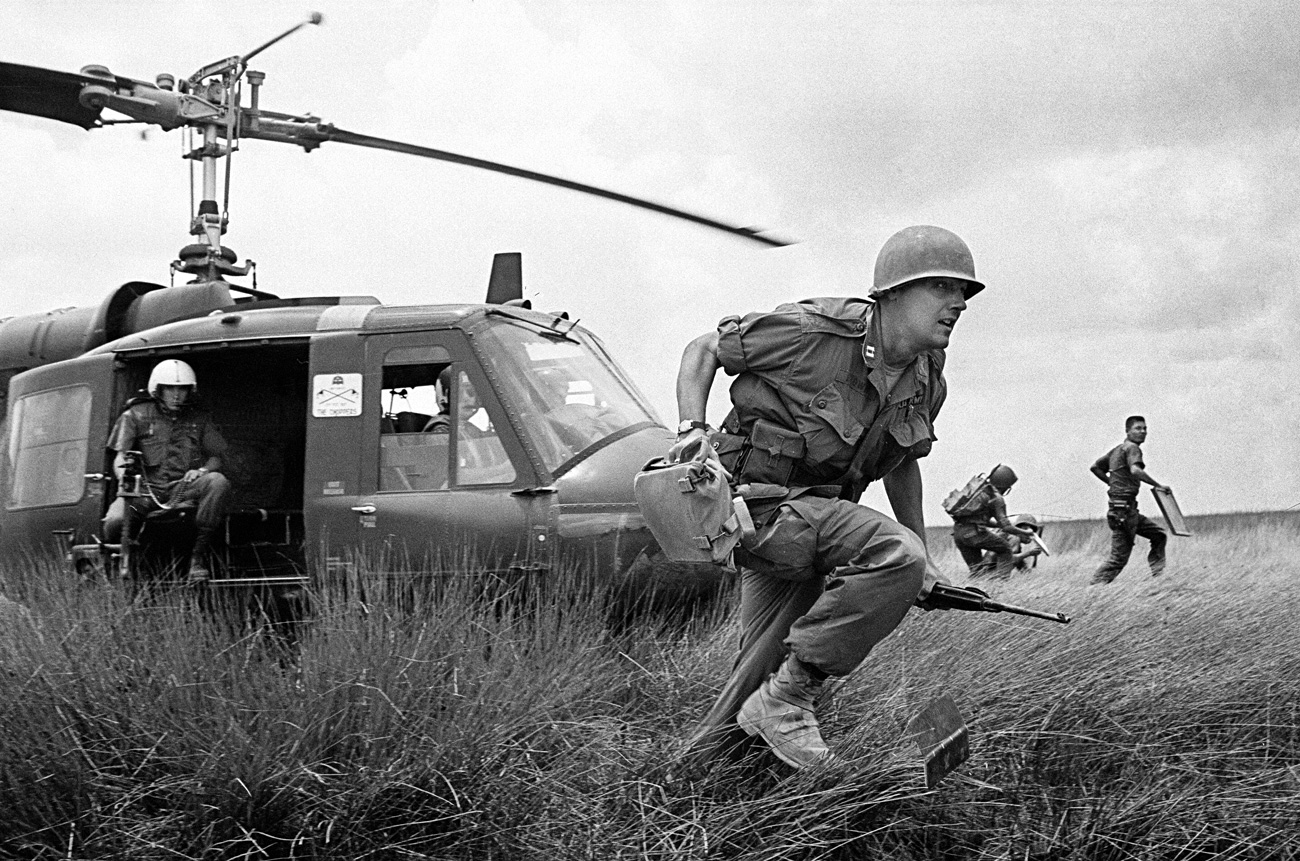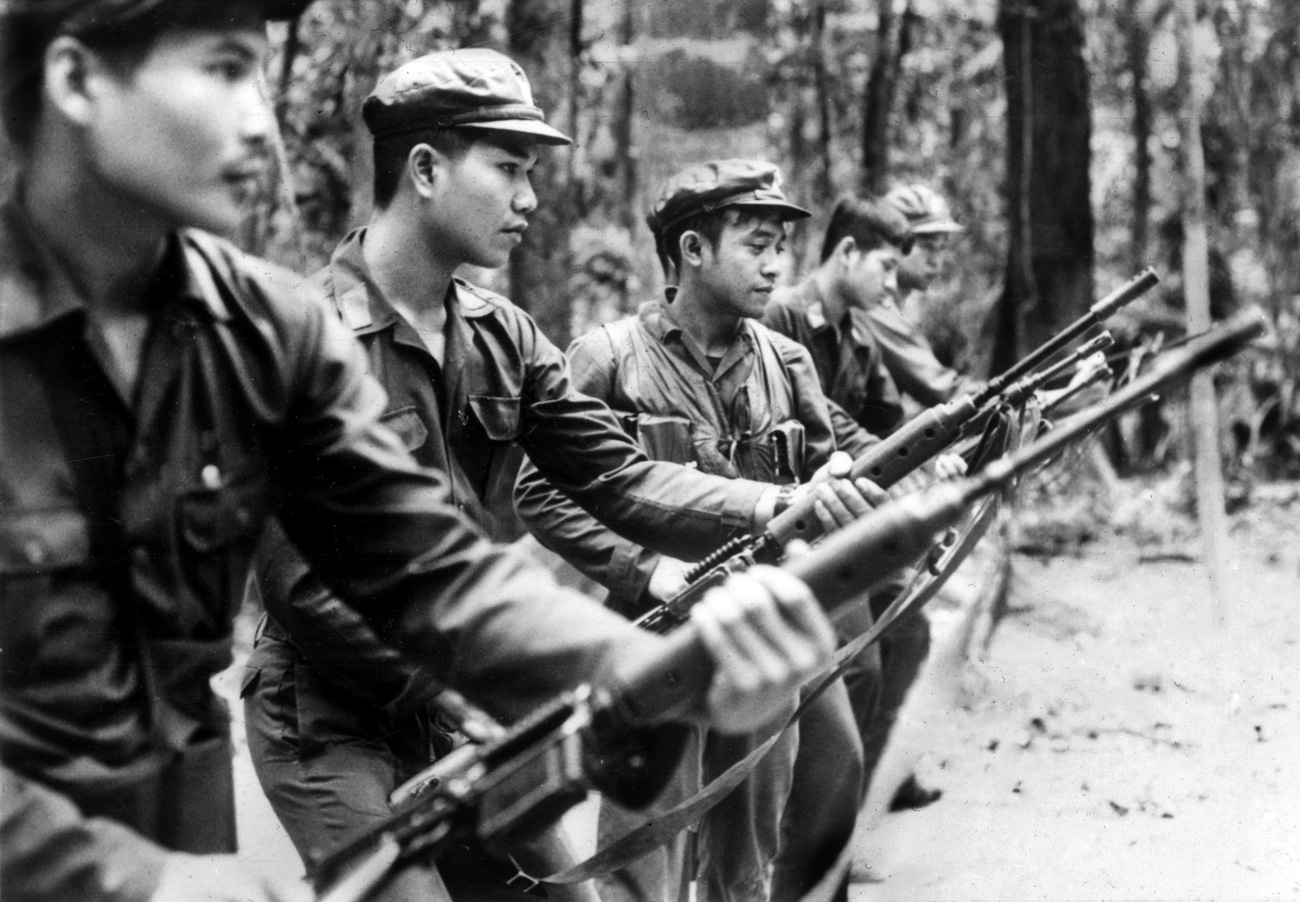How Moscow used Bangkok as a base to win the Cold War in Indochina

American military forces during the Vietnam War. The USSR initiated contact with the Vietnamese communists from Bangkok in the 1940.
APThe Soviet Union maintained a laissez-faire attitude with Thailand, knowing that the country, which lacked colonial baggage, grievances and land hunger, would not be ripe for communism. Moscow also refused to back the Communist Party of Thailand, which waged a bloody insurgency against the Thai government for 15 years.
The Thai capital of Bangkok, however, played a crucial role in Moscow’s efforts to spread communism in Indochina. “One of the main objectives of the USSR’s new diplomatic mission in Bangkok in the late 1940s was to establish contact with the North Vietnamese,” says Thunjira Wattaporn, a researcher based in Chiang Mai told RBTH. “North Vietnam, which became independent in 1945 was officially communist and needed the backing of the USSR.”
Contacts with North Vietnam
The Soviet Union had mixed experiences with Ho Chi Minh, who lived in Moscow for nine years, but refused to be a “henchman” of Joseph Stalin. Bangkok was the venue for initial government-level contacts between the countries.
“North Vietnam skirted a French embargo by getting cash from the Soviets in Bangkok”
“The first contacts between the new country of North Vietnam and the USSR were made in Bangkok,” Nguyen Thanh Khu, an academician based in Hanoi told RBTH. “The Soviets managed to pass on funds to North Vietnamese leaders based in Bangkok and also conveyed the message that Moscow would stand by Hanoi against the United States. This was, however, a long drawn process.”
Le Hy, the deputy head of the Vietnamese Information Bureau in Bangkok, traveled to Moscow in 1948 to meet Mikhail Bakhitov, deputy head of the Southeast Asia department of the Soviet Foreign Ministry to ask for economic and military assistance, Mari Olsen wrote in her book ‘Soviet-Vietnam Relations and the Role of China 1949-64: Changing Alliances.’ Le asked for weapons, ammunition and military equipment as a loan, and also requested that the USSR provide scholarships for North Vietnamese students, according to Olsen.
These requests were initially rebuffed by the Russians but the victory of the communists in China in 1949 gave Stalin hope that communism could be spread even in Southeast Asia. "In May 1949, Soviet analysts concluded that the success of the People’s Liberation Army of China undoubtedly has an outcome of the Vietnamese people’s fight for independence,” Olson wrote.Initial funding for North Vietnam came from the Soviet mission in Bangkok. “North Vietnam skirted a French embargo by getting cash from the Soviets in Bangkok,” says Khu. “Ironically the cash was used to buy American weapons from smugglers and mercenaries. And the weapons were used on the Americans!”
As Soviet support grew, North Vietnam was able to defeat the United States, which backed South Vietnam, in a bloody conflict that began in 1955 and lasted until 1975 when Vietnam was reunited under a Moscow-friendly communist government.
Civil War in Laos
Thailand’s neighbor Laos was embroiled in a bloody civil war from 1953 to 1975. The U.S. and the Soviet Union backed opposing sides in the war for control of the country, which was fought between communists, royalists, right-wingers and so-called neutralists.
A large part of the Soviet support for the Patet Lao came from Vietnam, but the role played by the Russian intelligence community in Bangkok is often overlooked
At certain points in the war, the combatants included troops and proxies from North Vietnam, Thailand, South Vietnam, Taiwan, the Philippines and the United States, which used the CIA Special Activities Division.
“Thousands of Thai soldiers dismissed from the Royal Thai Army and Air Force (their personal records removed from all files) were fighting alongside a whole army of tribal Hmong on the CIA’s payroll against the Patet Lao (Lao Communists),” Russian journalist Evgeny Belenkiy wrote in an article for RT.
“The Soviet intelligence personnel in Bangkok were the first to uncover the secret Thai force in Laos,” says Wattaporn. “Moscow presented the evidence to Bangkok of a large Thai presence in Laos and this led to Thailand scaling down its unofficial forces in the country.”
Wattaporn adds that the intelligence agents attached to the embassy in Bangkok kept tabs on the Americans and kept the USSR a step ahead. “A large part of the Soviet support for the Patet Lao came from Vietnam, but the role played by the Russian intelligence community in Bangkok is often overlooked,” Wattaporn says.Vietnamese academician Nguyen Thanh Khu adds that the coordination between the Soviet Union’s diplomatic missions in Bangkok and Hanoi and intelligence personnel on the ground was “flawless.”
The communists won the civil war in Laos and the country, which holds the ASEAN chair in 2016, remains one of Russia’s strongest allies in Southeast Asia.
In 2016, with Russia-Thailand economic and strategic ties on a high, Bangkok plays a completely different role in Moscow’s foreign policy. The city is now seen as one of the major economic gateways for Russia into ASEAN.
Read more: The treasures of Troy, on display in Russia
All rights reserved by Rossiyskaya Gazeta.
Subscribe
to our newsletter!
Get the week's best stories straight to your inbox

